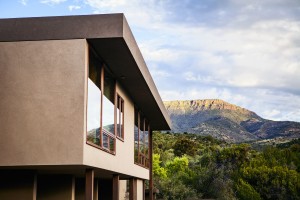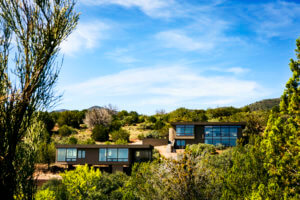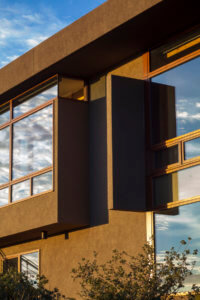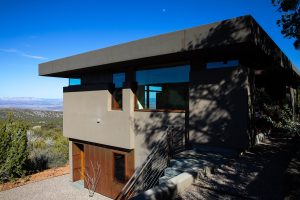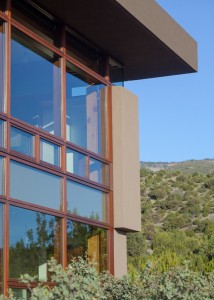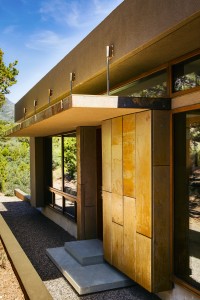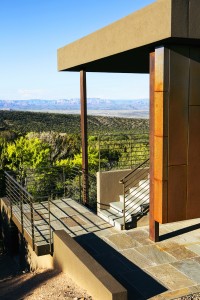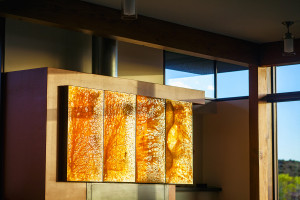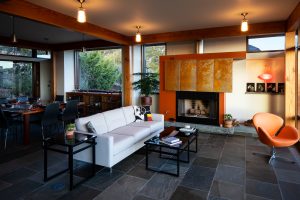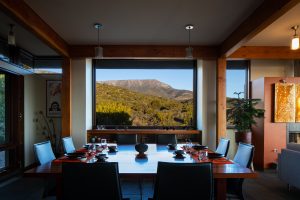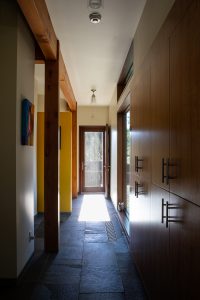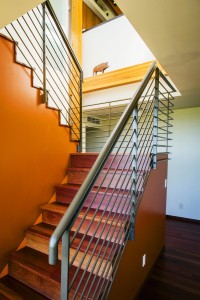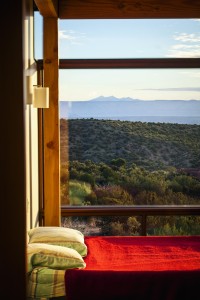
Situated in the foothills of Mingus Mountain, the house is nestled into the high end of 2.6 acres with expansive valley and mountain views. Envisioned as a series of elements rising and falling with the topography, the main house is reached through a series of terraces carved into the hillside.
The upper level contains open, transparent living areas with playful forms defining private spaces. Floating on piers over the horse stables is the one bedroom guesthouse.
Both post-and-beam structures incorporate earth-tone colors with mahogany windows with low-e glass, cherry wood and bluestone flooring, and weathering steel panels.
Completion Date
Spring 2015
Size
2,800 SF, 2.63-acre
Services Provided
Full Architectural Services
Project Type
Residential
“The most rewarding aspect of the house has been seeing how the plan, materials, and details have come alive in the landscape and sunlight… far beyond what we could have imagined.”
– Michael Szerbaty, AIA, Principal Emeritus at MDSA
Large glass surfaces provide transparency, connecting inside to outside with views focused in each direction. Solar angle studies were done to inform overhang dimensions, maximizing winter sun and summer shade.
The construction of the well-insulated solid walls and roof, and location of fixed and operable window are part of a passive solar design that permits abundant natural light and ventilation throughout the houses.
The construction efforts were carefully planned to preserve the existing topography and vegetation to the greatest extent possible. Taking cues from the planning and construction of American Indian ruins found throughout the desert Southwest, the project honors the site, respects the power of the sun, and explores the meaning of complex geometries overlaid on the steeply sloping landscape.
Check out Morning Sky House, from above, in this drone video tour!
The Vision

The Details


